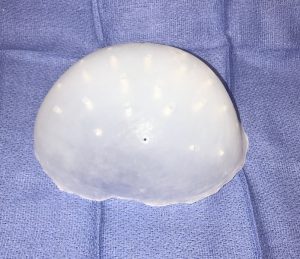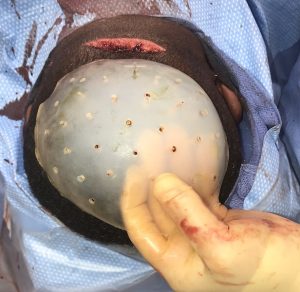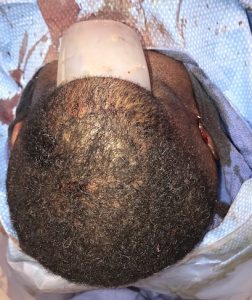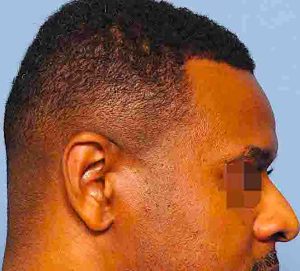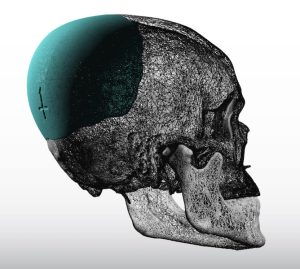
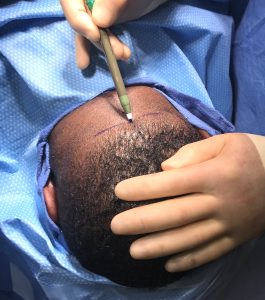
From this incisional approach dissection can start at the lowest point on the bone (nuchal ridge) and proceed to be done superiorly up over the occipital and parietal bones. The length of the scalp incision needed for a silicone skull implant is generally 35% to 40% of its maximum diameter. (e.g., skull implant diameter = 20cms, scalp incision length needed = 7 cms) This will be partially affected by the thickness of the implant as that affects its ability to be folded. (see below)
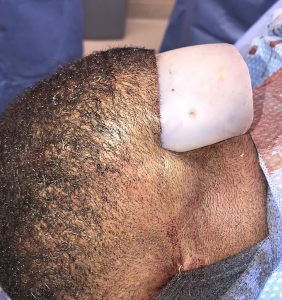
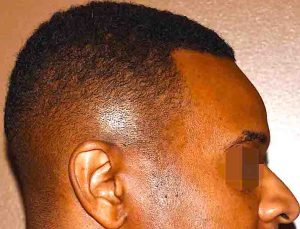
Dr. Barry Eppley
Indianapolis, Indiana



